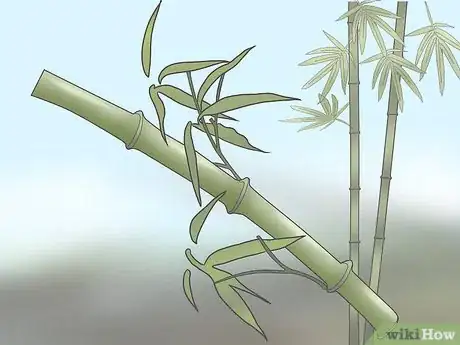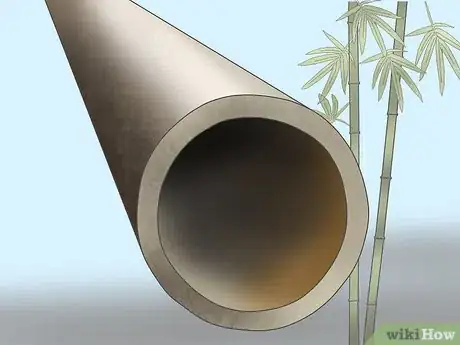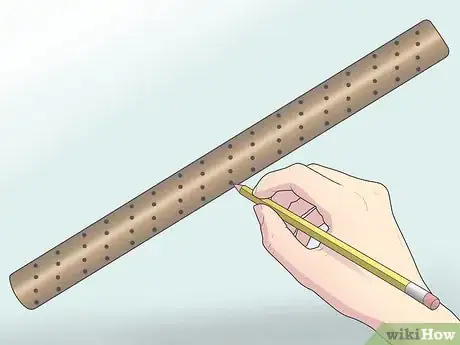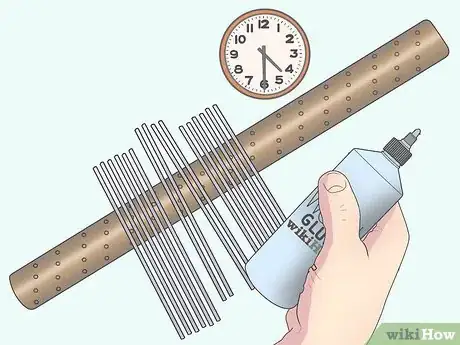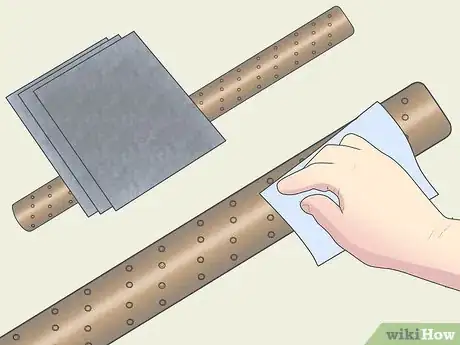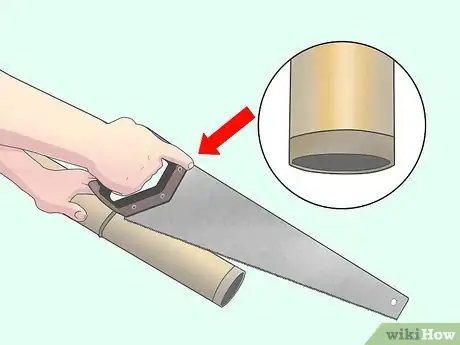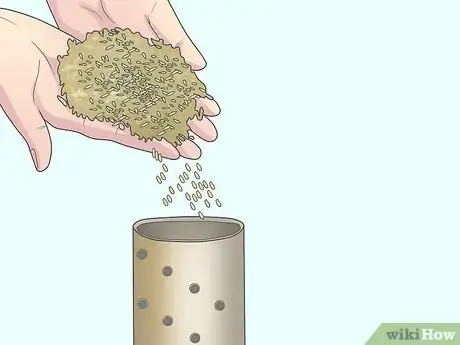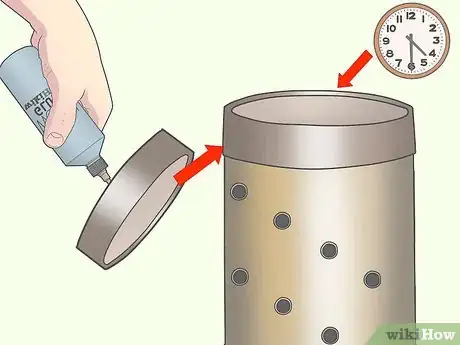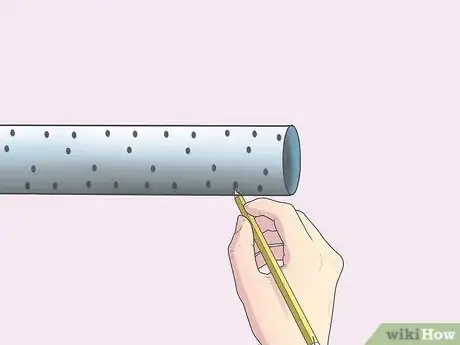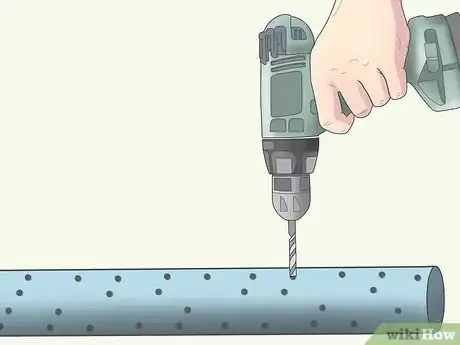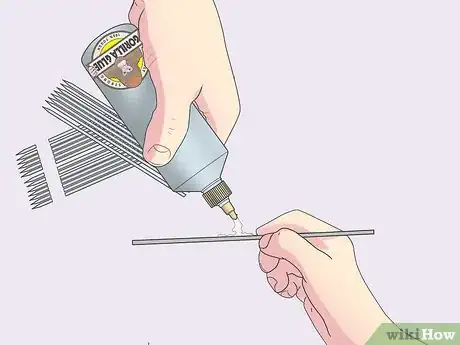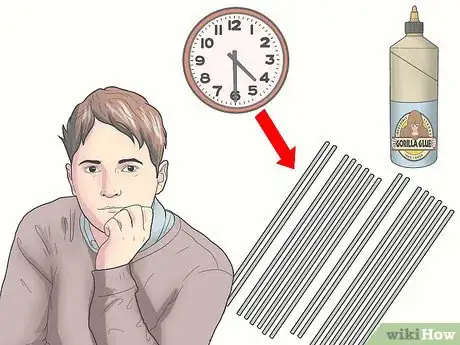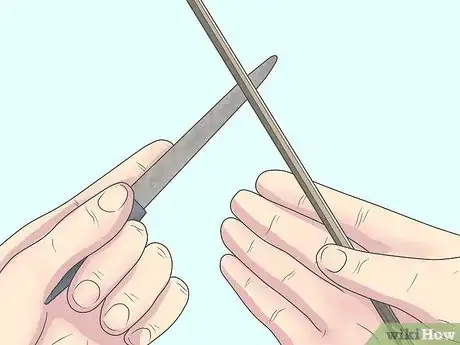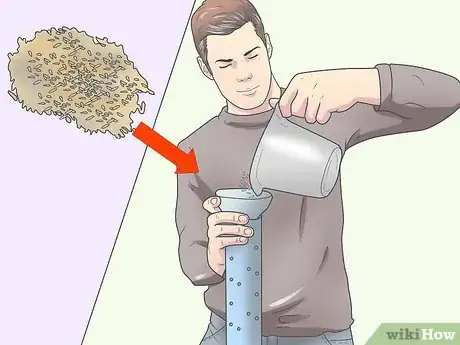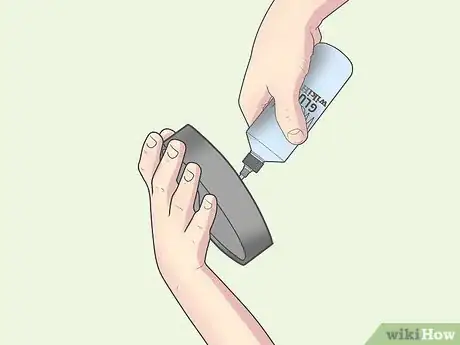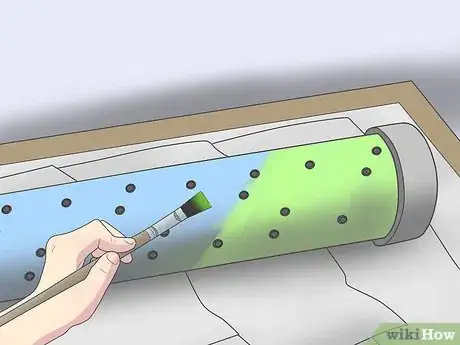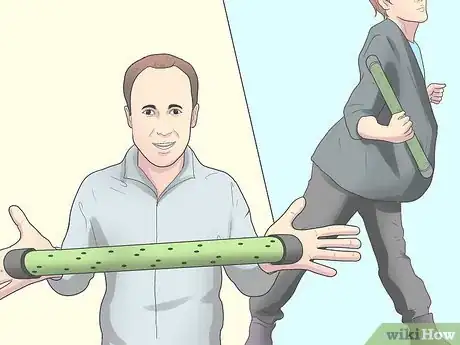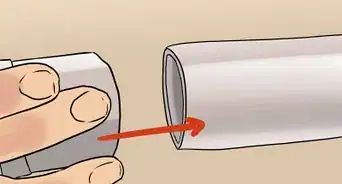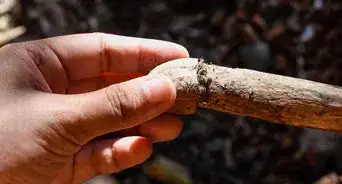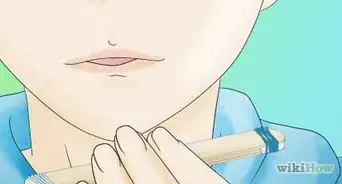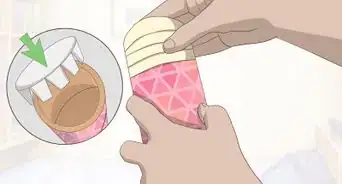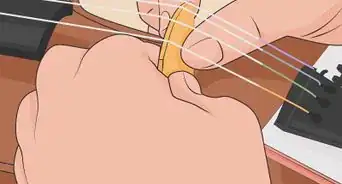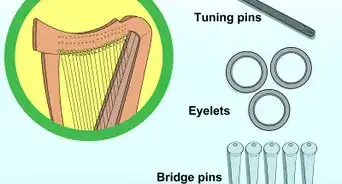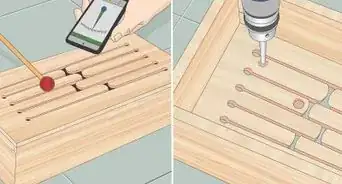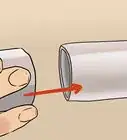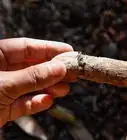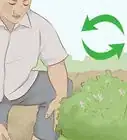wikiHow is a “wiki,” similar to Wikipedia, which means that many of our articles are co-written by multiple authors. To create this article, 48 people, some anonymous, worked to edit and improve it over time.
This article has been viewed 196,622 times.
Learn more...
If you long for the peaceful sound of falling rain, you can create it yourself by making your own rainstick. These cylindrical instruments mimic the sound of rain when turned from side to side. It is believed that rainsticks originated from South America, and were invented to help encourage rainy weather during times of drought. Rainsticks can be made of any type of hollow tube pierced through with nails or wooden skewers and filled with rice, beans or pebbles, which create a gentle plinking sound as they rain down the length of the tube. Read on to learn how to make a rainstick from bamboo, cardboard or a PVC tube.
Steps
Bamboo Rainstick
-
1Choose a piece of bamboo. You'll get the best sound if you choose a wide, long piece of dry bamboo. The longer and wider your wood, the richer the sound will be. You can cut and cure your own bamboo or buy a piece at a garden store. Get a smooth, straight piece without any bends or holes.
-
2Hollow the bamboo. If your bamboo piece isn't already hollow, use a metal rod to push out the material at its center. Once the path is clear, attach a piece of sandpaper to the end of the rod. Use it to sand the inside of the bamboo so that it's smooth and free of obstructions.
- If you don't have a metal rod, any sort of strong, long implement sturdy enough to scrape out the inside of the bamboo will work.
Advertisement -
3Make a pattern of dots on the bamboo. Use a pencil to create a pattern of dots around the outside of the bamboo. These dots will be the places where you bore holes to insert the wooden skewers, which are an essential part of the rainstick. Making a pattern that spirals around the bamboo from the top to the bottom will look very attractive and ensure that the pebbles or rocks you place inside will have plenty of obstacles to plink against.
-
4Drill the holes. Use a drill bit the same size as your wooden skewers, so they'll be able to slide right in. Carefully drill each hole you marked, taking care to puncture the bamboo without drilling through to the other side of the stick.
- If you do not have a drill, you can still make a rainstick using long nails. Instead of drilling the holes, use a hammer to pound a long nail through each hole. Make sure the nail isn't long enough to penetrate the other side of the bamboo stick.
-
5Insert the skewers. Put a bit of glue on the tip of a skewer and thread it through one of the holes. Push it through until it runs up against the other side of the bamboo stick. Use a sturdy pair of scissors or a small handsaw to cut the skewer flush against the bamboo stick. Continue inserting skewers and cutting the ends until each hole has been filled.
- This step isn't necessary if you used nails instead of skewers.
-
6Allow the glue to dry. Wait about an hour before finishing your rainstick.
-
7Smooth the sides. Sand off the nubs left from the skewers with a flat file or some sandpaper.
-
8Make end caps. To plug the ends of the rainstick, cut out two circular pieces of wood the same width as the ends of the stick. Glue the first end cap to the base of the stick using wood glue or superglue, to make sure it won't budge. Save the other cap for now.
- If you don't have the supplies to cut out pieces of wood, you can make endcaps out of cardboard, particle board, or another sturdy item you have in your home. Just make sure you can glue the cap securely to the end of the stick.
-
9Fill the rainstick with pebbles and other objects. Different materials will make different sounds as they plink against the wooden skewers. Use pebbles of different sizes, pennies, dried rice, dried beans, beads, and any other items you like. Fill the rainstick about 1/8 - 1/4 with objects.
- Don't overfill the rainstick, or you won't be able to hear the individual sounds of the objects.
- Putting too few objects in the rainstick won't give you the impression of rain when you use your instrument.
-
10Affix the other endcap to the rainstick. Use wood glue or superglue to seal the rainstick on the other side. Let it dry completely before using.
PVC or Cardboard Rainstick
-
1Choose a long, thin tube to use. Either PVC or cardboard works well. If you're using PVC, smooth the entire PVC pipe using a fine sanding sponge.
-
2Draw dots on the tube. These will mark the places where you'll create holes to build your rainstick. Start about two inches from the end of the tube and draw dots all the way up. These dots should be spaced apart evenly (one half inch up and one inch across) and arranged helically (spiraling).
-
3Drill the dots with a drill bit that corresponds with the size of your skewers. Drilling directly through the center of the pipe each time will produce a double-helix arrangement of holes.
- If you don't have a drill, you can use long nails instead. Place a long nail at each dot and use a hammer to hammer them in. Make sure the nails aren't long enough to pierce the other side.
-
4Insert the skewers. Dab the end of a wooden skewer with Gorilla glue or another sturdy glue and insert it into a hole. Cut the end so that its flush with the outside of the tube. Continue inserting the wooden skewers in the holes and cutting them to an appropriate length.
- This step isn't necessary if you used nails instead of skewers.
- You can get super glue designed for PVC pipe. In the pictures, Gorilla PVC Cement is used.
-
5Leave the rainstick to dry. Wait about an hour before finishing your rainstick.
-
6Smooth the sides. Sand off the nubs left from the skewers with a flat file or some sandpaper.
-
7Insert an endcap. Cover one end of the tube with a plastic, PVC or cardboard cap, so that the pebbles and other materials don't fall out.
-
8Fill the tube with pebbles and other materials. Pour in pebbles, dried rice, dried beans, beads, and other materials of your choice. Place your hand over the open end of the tube and tilt it to test the sound. You can add or remove material to fine-tune the sound.
-
9Finish the rainstick. After the desired sound is found, glue the other cap onto the end of the rainstick. Allow time for the glue to set.
-
10Decorate the rainstick. Use ModPodge (or an equivalent decoupage substance) to paint the rainstick evenly. Working with a small portion at a time, place decorative tissue paper over the glue, pressing it down against the tube. After covering the pipe with decorative paper, go over it with more coats of Mod Podge until it isn't papery to the touch. Let it dry completely.
-
11Admire its beauty and do a rain dance!
Community Q&A
-
QuestionWhat if we use pebbles?
 Community AnswerPebbles will work as well, but you should clean them off before using. They will most likely give a louder different sound.
Community AnswerPebbles will work as well, but you should clean them off before using. They will most likely give a louder different sound. -
QuestionIs there any other way for a kid with limited access to seal the ends of a cardboard rainstick?
 Community AnswerIt depends. Do you have tape and construction paper? I've tried that before and it works fine.
Community AnswerIt depends. Do you have tape and construction paper? I've tried that before and it works fine. -
QuestionWill the beans, peas, or rice ever go bad?
 Community AnswerDon't use peas. The rice and beans will be fine indefinitely, provided they are raw.
Community AnswerDon't use peas. The rice and beans will be fine indefinitely, provided they are raw.
Warnings
- Always be cautious when using power tools or other dangerous items. Have someone near enough to provide you with assistance if you need it.⧼thumbs_response⧽
Things You'll Need
Bamboo Rainstick
- One piece of bamboo
- Metal rod
- Square of sandpaper
- Two wooden plugs
- Wooden skewers or long nails
- Pebbles, rice or other baubles, such as lentils, split peas, or small gravel
- A drill
- Super glue
- Pencil
Cardboard or PVC Rainstick
- One thick cardboard tube or length of PVC pipe
- Two cardboard, plastic or PVC caps that can be fitted to the ends of the tube
- Wooden skewers or long nails
- Pebbles, rice or other baubles, such as lentils, split peas, or small gravel
- A drill
- Super glue
- Square of sandpaper
- Pencil
- Scissors
- Tissue paper or other papery materials
- About one quarter (1/4) cup of Mod Podge
- A paint brush
About This Article
To make a rainstick out of a PVC or cardboard tube, start by drawing dots that are ½ inch apart around the outside of the tube in a spiral pattern. Next, hammer nails through the dots, making sure you don't pierce through the other side of the tube. Then, insert skewers into the holes and cut off the ends to theyre flush with the outside of the tube. You can also sandpaper the sides of the tube so the nubs from the skewers lay flat. Finally, glue a cap on 1 end of the tube, pour pebbles, beads, or dried beans in the open side, then glue the other cap on. To learn how to decorate your rainstick, keep reading!
